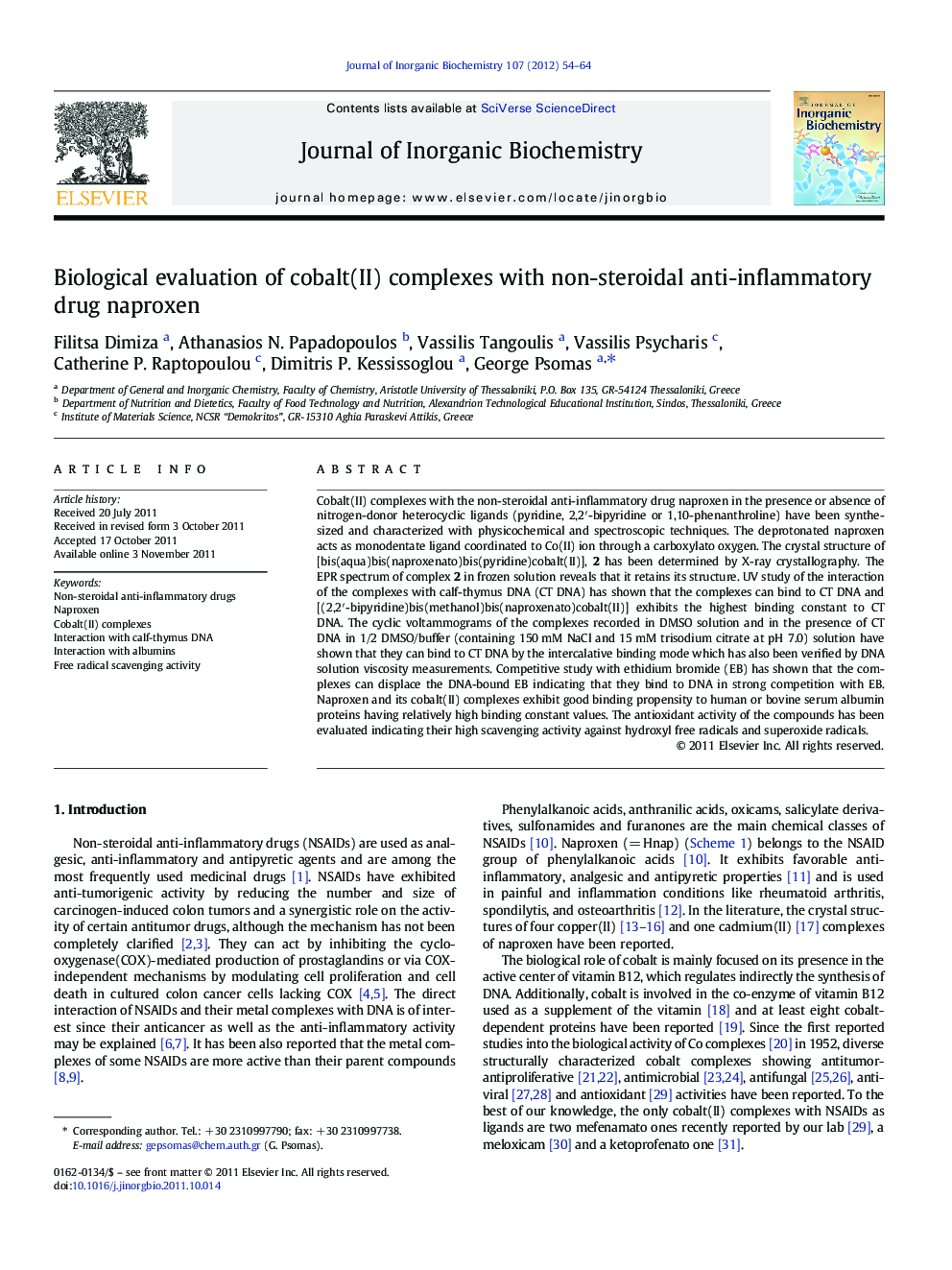| کد مقاله | کد نشریه | سال انتشار | مقاله انگلیسی | نسخه تمام متن |
|---|---|---|---|---|
| 1317830 | 976589 | 2012 | 11 صفحه PDF | دانلود رایگان |

Cobalt(II) complexes with the non-steroidal anti-inflammatory drug naproxen in the presence or absence of nitrogen-donor heterocyclic ligands (pyridine, 2,2′-bipyridine or 1,10-phenanthroline) have been synthesized and characterized with physicochemical and spectroscopic techniques. The deprotonated naproxen acts as monodentate ligand coordinated to Co(II) ion through a carboxylato oxygen. The crystal structure of [bis(aqua)bis(naproxenato)bis(pyridine)cobalt(II)], 2 has been determined by X-ray crystallography. The EPR spectrum of complex 2 in frozen solution reveals that it retains its structure. UV study of the interaction of the complexes with calf-thymus DNA (CT DNA) has shown that the complexes can bind to CT DNA and [(2,2′-bipyridine)bis(methanol)bis(naproxenato)cobalt(II)] exhibits the highest binding constant to CT DNA. The cyclic voltammograms of the complexes recorded in DMSO solution and in the presence of CT DNA in 1/2 DMSO/buffer (containing 150 mM NaCl and 15 mM trisodium citrate at pH 7.0) solution have shown that they can bind to CT DNA by the intercalative binding mode which has also been verified by DNA solution viscosity measurements. Competitive study with ethidium bromide (EB) has shown that the complexes can displace the DNA-bound EB indicating that they bind to DNA in strong competition with EB. Naproxen and its cobalt(II) complexes exhibit good binding propensity to human or bovine serum albumin proteins having relatively high binding constant values. The antioxidant activity of the compounds has been evaluated indicating their high scavenging activity against hydroxyl free radicals and superoxide radicals.
Interaction of cobalt(II) with the non-steroidal anti-inflammatory drug naproxen in the presence or absence of nitrogen-donor ligands leads to the formation of complexes that bind to DNA by intercalation, exhibit good binding propensity to serum albumin proteins and indicate significant scavenging activity.Figure optionsDownload as PowerPoint slideHighlights
► Cobalt(II) complexes with non-steroidal anti-inflammatory drug naproxen.
► Intercalation is the most possible binding mode of the complexes to DNA.
► The complexes can displace EB from EB–DNA complex.
► The complexes can bind to human or bovine serum albumin protein.
► The complexes exhibit higher scavenging activity than free naproxen.
Journal: Journal of Inorganic Biochemistry - Volume 107, Issue 1, February 2012, Pages 54–64